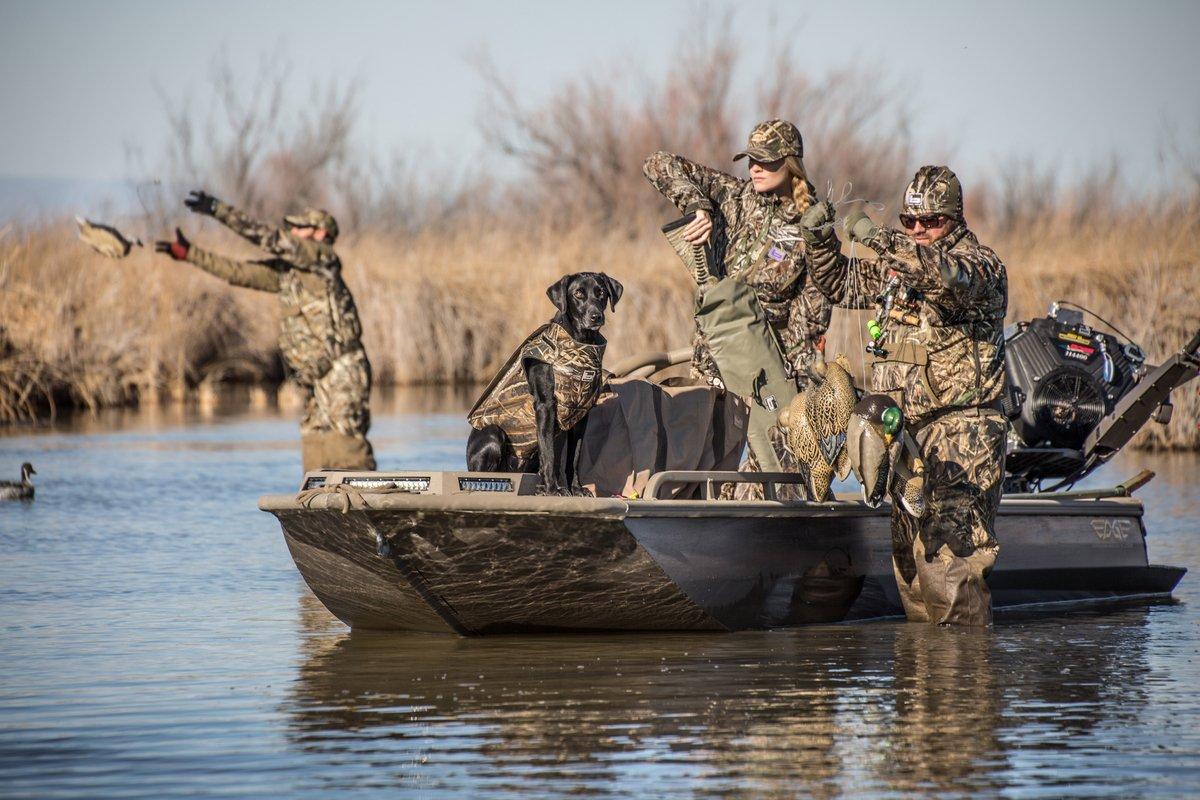When the going gets tough, these flash-hunt strategies can still put birds in the boat
Turkey hunters sometimes use the term "flash hunt," which essentially means they locate, call in and then kill a bird extremely quickly. And although that definition doesn't quite fit in the waterfowling world, duck and goose hunters can at times enjoy extremely brief yet productive hunts. You have to be on the lookout for the right scenario, and prepared to pull it off when the time is right.
Wood Duck Pass-Shoots
Wood ducks typically fly from roosting to feeding or loafing areas during the first few minutes of legal shooting hours — or before — and then move far less during daylight. Right before dark, usually during the final minutes of legal light, they return to roosting areas in waves. Savvy waterfowlers know this and can cash in on these brief but intense flights. When conditions aren't ideal — think unseasonably warm temperatures or burned-out public water — this can be a way to take advantage of limited opportunities and still put a few ducks in the boat.
Try to be where woodies want to go at first light, and be ready. Scout for hot feeding areas, such as acorn-rich ponds or creek bends, or slash water in freshly cut cornfields. If you can't find the X, locate flight lines where woodies travel. Throw out a few decoys, but remember that location is far more important than attraction when you're pass-shooting wood ducks. And don't hesitate to shoot at birds that are in range. Wood ducks often offer only passing shots or one fly-by.
Jump and Set Hunts
In prairie regions, hunters often jump ducks off potholes, then set up and shoot birds as they return. The action is usually short-lived if the ducks have been pressured or have other nearby feeding and loafing options, but it's always worth a try (and it works on farm ponds and other small wetlands, too).
The trick is to set up as quickly as possible after flushing birds. Sometimes, it's actually better to forget the decoys and focus on hiding, especially if the area you're hunting is small. The first eager ducks might return within 15 minutes or less. If you flush the ducks before daylight, toss out a few blocks and be set and ready when legal shooting light arrives.
Winds of Change Diver Hunts
Diver hunters know that intense weather shifts often spur heavy but brief duck movements. Prime examples include major wind changes, quickly approaching low-pressure systems or the first few minutes after rain or at the start of a snowstorm.
Of course, these scenarios can be extremely difficult to predict. The best you can do is to watch the hourly forecast, get set up for the conditions and take advantage of duck flights when the weather shift hits and birds move. That might entail hunting for several hours to take advantage of a half-hour window, but full straps of ducks can result.
Just Hunt
Putting time in the boat or blind always boosts success. Just realize that many chances might be fleeting, and be prepared to cash in. Flash hunts don't last long, but the memories of a few intense minutes can keep you warm and fuzzy during the off-season.
Click here for more Realtree waterfowl hunting content. And check us out on Facebook.








